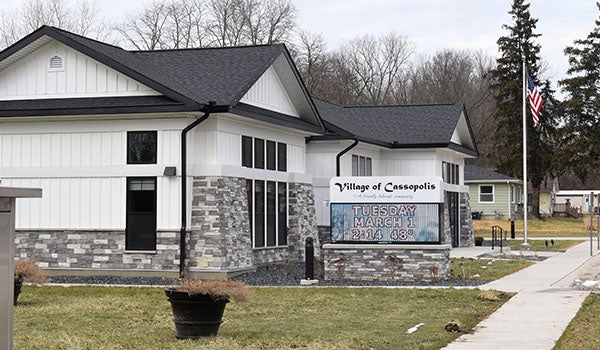Cass County Animal Control visits Rotarians
Published 8:49 am Friday, August 23, 2019
DOWAGIAC — Dogs and cats in Cass County were the topic of discussion at the Dowagiac Rotary Club’s weekly meeting.
Ronald Butts, the director of the Animal Control division of the Cass County Sheriff’s Office, gave a presentation on the responsibilities and operations of the division to Rotarians.
Butts, a lifelong resident of Cass County, started working at animal control in 1991 as a kennel assistant. He was quickly promoted to enforcement officer, serving in that role until 2017, when he was appointed director by Sheriff Richard Behnke.
Back in 1997, the Cass County Board of Commissioners and Sheriff Joseph Underwood decided to have the animal control division merge with the sheriff’s office. Since then, it has been a useful and beneficial merge for the division to be in the law enforcement community, Butts said.
The mission of animal control is to provide quality, professional care and equitable enforcement of the Cass County dog ordinance and state statutes relating to dogs and other animals, Butts said.
“We strive to provide a clean, cheerful and safe environment for homeless and owner released dogs and cats,” Butts said. “We also attempt to locate owners or find homes for unwanted animals. That has been a challenge for us for many years, and we are not alone in the animal welfare industry.”
With 28 years of experience, Butts said he has seen the animal welfare industry change throughout the years, as animal control officers are now also enforcement officers because they provide a vast array of services to the community.
The Animal Control division of Cass County is unique from others in the state, Butts said. Cass County’s division is comprised of two separate entities — a shelter operation where animals are housed if residents of the county find stray animals or can no longer take care of animals, and a road division with road patrol that enforces county and state ordinances.
“There are other agencies throughout the state that do not have a shelter,” Butts said. “[With a shelter], we have been tasked to make their lives better for them.”
Butts said he prefers to not use statistics, but realizes they are a focal point as the division is responsible for its shelter, which is licensed through the state.
In 2018, the animal control division has taken in 373 dogs and 489 cats, which are lower numbers than in the past, Butts said.
“In the past we’ve been nicknamed ‘Cats County,’” Butts said.
Every year, the state requires the division to submit all of its shelter numbers. Some of these are good and some of these are not so good, Butts said.
In 2019, the division has had 82 dogs adopted and 84 cats adopted. Owners have reclaimed 96 dogs reclaimed and 30 cats, which represents a trend of a larger number of cats as being reclaimed, Butts said.
“The state doesn’t require that we house cats,” Butts said. “By law, we don’t have to take a cat in. We recognize there is an issue with cats. It is a problem we need to address.”
This year, the division has transferred 134 dogs and 206 cats because of its efforts to build relationships with other agencies, animal control divisions, humane societies and private rescue groups licensed by the state. Currently, the division has 15 different transfer partners throughout the state.
This year, 17 dogs and 112 cats have been euthanized. These numbers are lower, compared to last year, Butts said.
“That’s my goal, and that’s what I am going after,” Butts said. “This is what I am proud of. My officers are working with and networking with these other agencies throughout the state. We are able to get those numbers down. Those animals don’t deserve to be euthanized. … They can’t speak. We are responsible for them to make sure they can try to get into a good home.”
Last year, the division’s live release rate was 59 percent, meaning 59 percent of the animals they brought in were able to be adopted, reclaimed or transferred to another agency. This year, the division has increased its live release rate to 83 percent.
“I’m here for the animals, and that’s the way it’s going to be,” Butts said.
The road patrol division remains just as busy out on the road as animal control does is in the shelter, Butts said. The road patrol handles livestock destructions, animal bites, animal cruelty issues, barking dogs, injured animals and on occasion, wildlife calls.
Lastly, Butts highlighted the division’s expansion of a spray neuter assistance program that is funded strictly through donations. To date, the division has provided financial assistance to more than 90 pets this year alone.
“The problem with why we have so many animals is over population,” Butts said. “I don’t want them in a building. I want them living a healthy life back in the community. I want to ask the community to help us, help them.”






